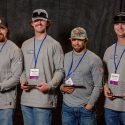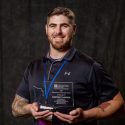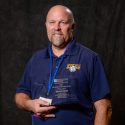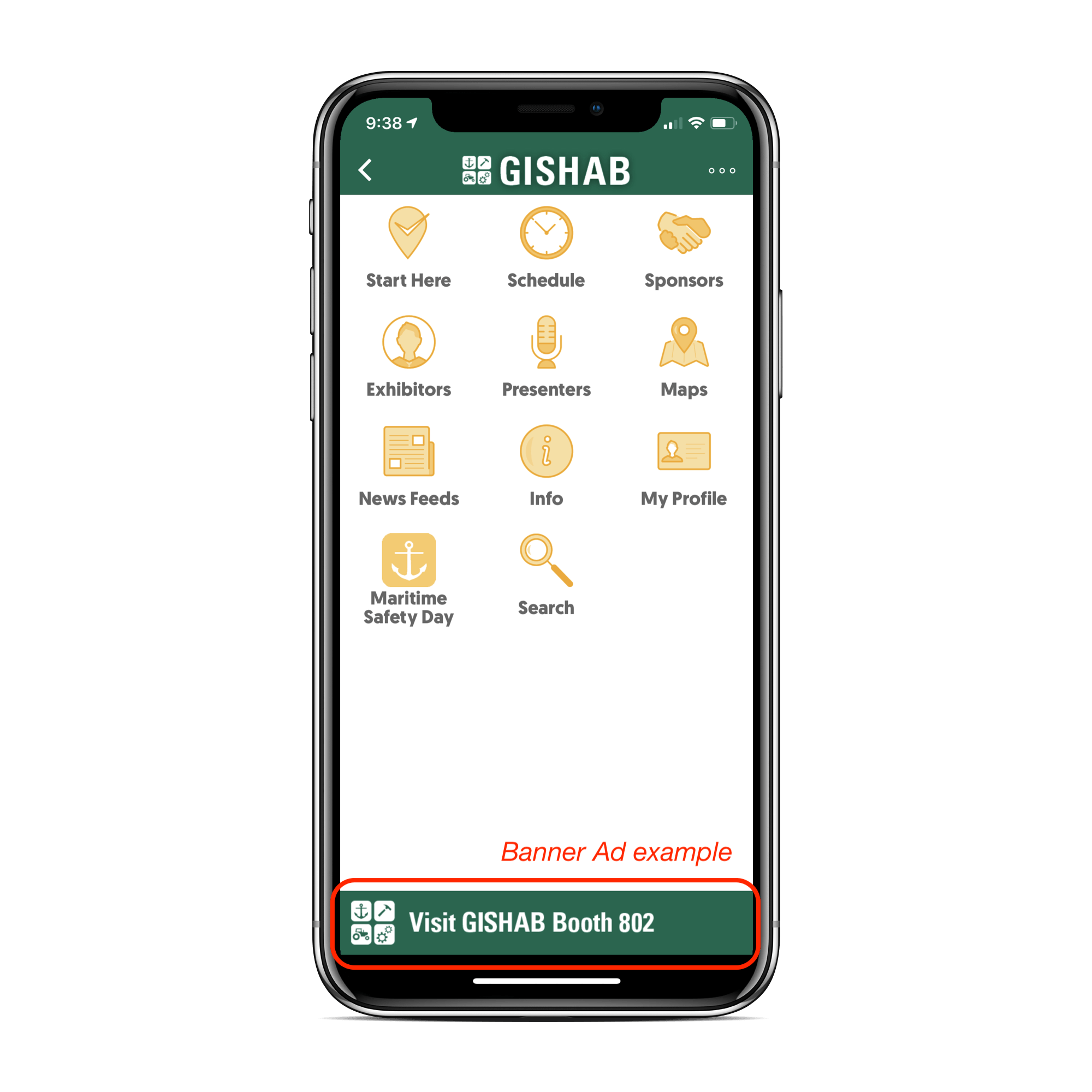The Governor’s Industrial Safety and Health Advisory Board honored this year’s Lifesaving Award Recipients at the 72nd annual Governor’s Industrial Safety and Health Conference. Derek Deis at KXLY-TV in Spokane presented the awards to the 22 Lifesaving award recipients.

John Luse
John Luse was driving to a substation for his work with Avista Corp when he saw a man performing CPR on another man on the side of the road. Without hesitation, John pulled over and dialed 911.
The man performing CPR explained it was a third-day Fentanyl overdose. John noticed the man searching for Naloxone.
Commonly referred to as Narcan, Naloxone is a medication that can reverse the effects of opioids during an overdose. John joined in the life-saving efforts, performing chest compressions while receiving instructions from a 911 operator through an ear bud.
Emergency medical services arrived, took over compressions, administered Naloxone and used bag breathing to help the man recover. John’s quick and determined efforts were crucial in keeping the man alive until medical help could arrive.

Sheydan McCoy
Sheydan McCoy, a Para educator with the Clover Park School District, was watching over lunchtime when he saw a 5th grade student choke on a piece of a pretzel.
Sheydan administered the Heimlich maneuver about 10 times until the pretzel piece was unstuck and the student’s breathing returned to normal. Although the student was understandably shaken, there was no lasting harm. Sheydan’s ability to notice the problem right away and act quickly while remaining composed was crucial in saving the student’s life.

Justin Atkinson, Kellan Bulman, Tre Harris, Anthony Haugstad
While working on a pedestrian replacement project, a Snohomish County PUD crew noticed smoke coming from a nearby house. Justin Atkinson, with fellow crewmembers Kellan Bulman, Tre Harris, and Anthony Haugstad, quickly sprang into action, vigorously knocking on the door until the unaware occupants answered.
The occupants were the elderly parents of the homeowners and lived downstairs in the split-level house. The father, a heavy sleeper with hearing difficulties, shared the space with his wife, who suffered from multiple sclerosis, used a walker, and was hearing-impaired. Responders said the couple might not have heard smoke alarms and gotten out in time if it weren’t for the work crew’s quick actions.

Courtney Pettitt
Courtney Pettitt, is a Social Services Specialist with Child Protective Services at the Department of Children, Youth and Families (DCYF). A caregiver carrying a one-month-old baby approached Courtney and her co-worker saying they were concerned about the baby’s health following prior medical treatment it had received throughout the week.
Courtney took a quick look at the baby in the car seat and immediately noticed an unusual grayish tint to the baby’s complexion. Without hesitation, Courtney quickly removed the baby from the car seat, gently placed it on the office floor, and called 911. Following the operator’s guidance, Courtney performed CPR on the baby for about six minutes before medical professionals arrived.
The baby’s condition stabilized and it is receiving further medical care. The caregiver’s decision to seek help and Courtney’s quick response played a vital role in the baby’s survival that day.

Teri Franklin
As the morning bell rang, Keri Franklin, a nurse in the Renton School District, received a message from the assistant principal regarding a student who had fallen down the stairs and was having difficulty walking. Keri rushed to the scene to find the student lying flat on the ground. Despite being oriented and denying any head or neck injuries, the student was too weak to sit up, but could still move their arms and legs. The student told Keri that earlier, during breakfast, they’d felt a sudden, piercing pain in their right eye followed by a severe headache.
Keri wasted no time in calling 911. She observed the student’s condition quickly worsening with vomiting, drowsiness, and weakening in the left- side limbs. EMTs arrived and considered everything from migraines to seizures. Keri’s intuition, however, pointed toward a stroke, which would be unusual for someone so young.
Keri accompanied the student to Seattle Children’s Hospital, where they were diagnosed with a hemorrhagic stroke due to an arteriovenous malformation, previously undetected. The student underwent surgery and was later transferred to Harborview Hospital for further care.
Reflecting on a decade of experience working at Harborview Hospital herself, Keri’s experience with stroke patients proved invaluable in saving the student’s life.
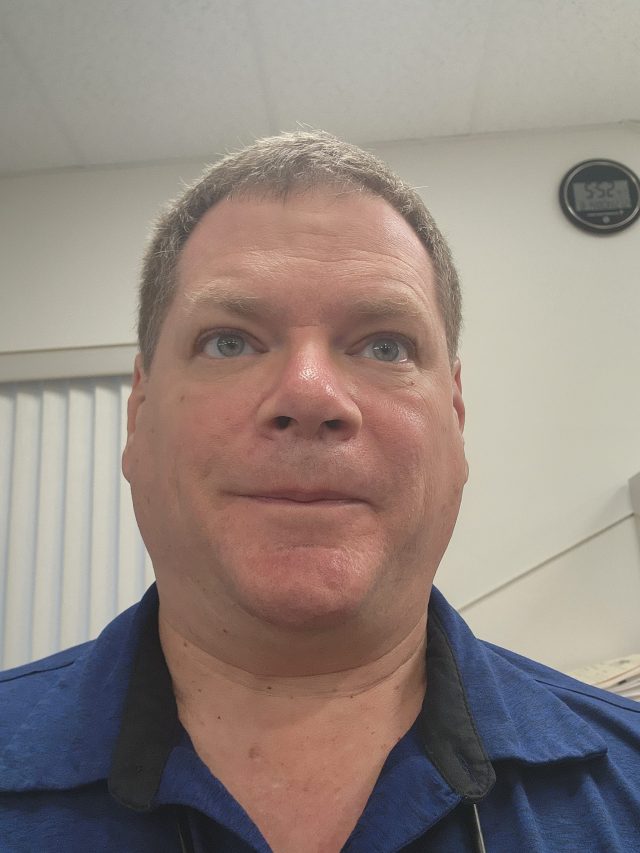
John Hagfeldt and Steve Short
Energy Northwest employees John Hagfeldt and Steve Short were working when they observed their colleague Bob Powell’s health was declining. They quickly dialed for medical aid, getting Bob to the hospital without wasting valuable time. John and Steve’s rapid reaction meant Bob received crucial and timely medical treatment that not only saved his life, but also prevented possible long-term damage.
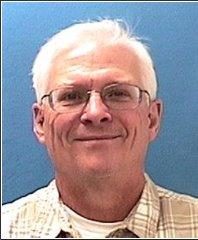
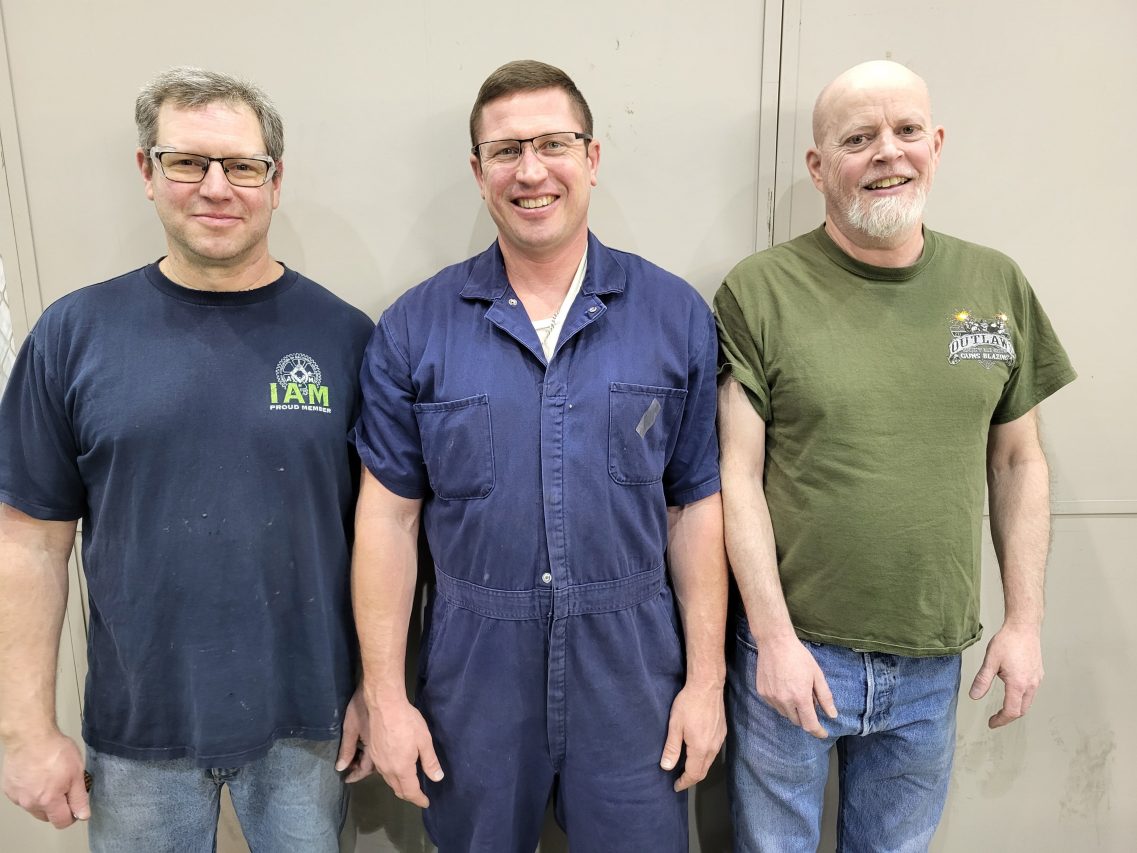
Nathan Lundberg, Dan LaPlante, Tim Carlson
Nathan Lundberg was just arriving at his job at The Boeing
Company when he noticed his colleague, Bill, was slouched over a computer. He
then collapsed face-first onto the floor. Nathan and another colleague felt for
a pulse, soon realized Bill’s heart was no longer beating, and he wasn’t
breathing, so Nathan began chest compressions.
Soon, Dan LaPlante arrived to help, becoming the voice of
hope, telling Bill, “Stay with me” and “Fight this. You have your daughter’s
wedding.” Aware that Nathan was tiring, co-worker Tim Carlson stepped in,
taking over compressions. Medics arrived and using an Automated External
Defibrillator (AED) machine, they were able to shock Bill’s heart and his pulse
returned.
Bill said he has immense gratitude for his co-workers,
acknowledging the CPR they performed and their quick actions saved his life.

Dorina Fithen
Dorina Fithen was working as a Juvenile rehabilitation community counselor with DCYF when she heard a car crash outside the office door. She ran out to find a driver had crashed their car into a pole. Dorina put the gearshift in park and was able to communicate enough with the driver to learn they had taken Fentanyl.
Dorina quickly ran to get Naloxone from her desk and administered two doses to the driver. She then gave the driver a third dose while simultaneously performing chest compressions. The driver regained consciousness and alertness. Dorina’s quick thinking, her access to Naloxone, and her CPR skills played a pivotal role in saving the driver’s life.
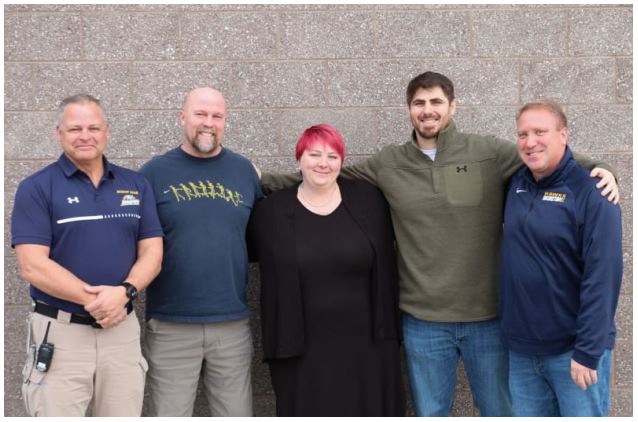
Courtney Bissinger, Kurtis Clawson, Ken Lattin, Ben Schuldheisz, Shaun Suss
A student with a seizure disorder has a team of lifesavers from the Kennewick School District to thank for his life. During a P.E. class, the student had seizure, but this time there was something different that caught the attention of Para educator, Courtney Bissinger, prompting her to get help. As the seizure unfolded, the student’s complexion paled, and his breath faltered.
P.E. teacher, Shaun Suss, sprinted to the office to call an ambulance. Kurtis Clawson and Ben Schuldheisz overheard the call and stepped in to help. Blending his teaching role with his experience as a Marine, Kurtis’ medical expertise became a lifeline. Despite their efforts, Shaun and Ken Lattin, a retired Kennewick Police officer who was also on site, realized the student had no pulse.
Ben jumped into action, retrieving the nearby AED machine. In sync with the AED’s signals, Ben matched its shock with deliberate chest compressions. Color returned to the student’s face, he began breathing again and his heart regained its rhythm.
With a pacemaker and a new lease on life, the student returned to school and was able to play baseball in the spring.

Roy Cardenas
During a dinner with residents and staff, one of the residents suddenly showed signs of distress and couldn’t communicate. Moving quickly, Roy Cardenas, a juvenile rehabilitation counselor with DCYF, immediately took action, administering the Heimlich maneuver, successfully clearing the blocked airway.
Once the obstruction was cleared, Roy made sure the resident was okay until they could get further medical attention. Roy’s quick response and ability to stay calm was crucial in preventing a potentially deadly outcome.

Sue Green
Sue Green, a project director in the Health Care Authority’s Division of Behavioral Health and Recovery, was leaving work when she saw people gathered around a man lying in the parking lot. While the bystanders talked with a 911 operator, Sue, a trained substance use disorder professional, suspected the man was overdosing. She did a sternum rub with no response, so she administered a dose of Naloxone and soon the man began to regain consciousness.
Sue remained by his side, offering reassurance and speaking to him until emergency medical services arrived. Because of her training, she recognized the signs of an opioid overdose and had naloxone ready to use if she ever needed it. Sue’s quick and compassionate reaction played pivotal part in saving the man’s life.

David Keyser
David Keyser, an operator at the Grant County Public Utility District (PUD), was in the right place at the right time. One of his colleagues was choking and desperately signaling that she needed help. Another operator stepped in to do the Heimlich maneuver, but it wasn’t working.
David, a nine-year volunteer firefighter and EMT, noticed the height difference between the operator and his co-worker and realized that’s why it wasn’t working. David helped his colleague reposition his stance, concentrating the pressure on the choking woman’s diaphragm. She suddenly started breathing again and thanks to her co-workers’ quick actions and David’s emergency medical knowledge, no harm was done.
Photos of the Lifesaving Award Recipients who were able to receive their awards in person at the Governor’s Industrial Safey and Health Conference. The award ceremony was on September 27, 2023. Watch Derek Deis honor the recipients in the video below.

